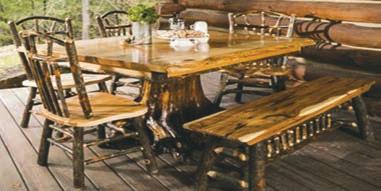
10 minute read
Coyotes
by The Laker
Living with Coyotes in New Hampshire Throw away your misconceptions
By Mark Okrant
Advertisement
Many of us have preconceived notions about coyotes. These range from the comical cartoon character, Wile E. Coyote, to misguided images of relentless, bloodthirsty predators.
Eastern Coyotes are the product of migration and breeding with Eastern Wolves in Ontario. They are eight to 12 percent Eastern Timber Wolf, part dog, and the remainder is coyote. Weighing 35 to 60 pounds, and measuring fi ve feet in length, they are nearly twice the size of their western cousins. The present population of Eastern Coyotes began to arrive in New Hampshire during the 1940s and 1950s, fi lling in a niche that had been created by elimination of wolves from the northeast. Several decades later, coyotes had established themselves as a vital constituent within the food chain. Today, there are approximately 5,000 coyotes living in New Hampshire.
Coyotes are territorial animals. Their turf ranges in area from fi ve to 25 square miles, which often places them near human enterprises, such as farms and housing developments. While many of us live within the territory of a pack of coyotes, most of us will never come into contact with them. A coyote pack will establish itself where an ample food supply and at least one den site are available. Once they have located themselves in an area, a pack of The Eastern Coyote. (courtesy photo)
coyotes will defend its territory against threats by outside packs, as well as other predatory animals.
Coyotes living in captivity have exhibited lifespans of considerably more than a decade. However, among those living in the wild, the average lifespan is three to four years. This tells us a great deal about the perils of life for coyotes in the Granite State. At least half of a litter—four to six pups—will die from disease and other predators, especially weasels. Adult coyotes must face the gauntlet of disease, trapping, hunting, and being hit by motor vehicles.
Coyotes are capable of thriving in a wide range of environs—urban, suburban, and rural areas. That they can do this is a tribute to their adaptability. Unlike the wolves they replaced within the environmental niche, coyotes are generalists rather than specialists. While wolves failed to adapt once their environmental setting was disrupted, coyotes are able to live anywhere and adjust to vagaries in the local food supply.
A period between January into March constitutes their breeding season. During this time, the pack’s alpha female and her mate will procreate; then, after a 63-day gestation period, the female will fi nd a den and give birth to her pups. The female will remain in her den until mid-May, while the male and the pack aggressively protect the pups against predators. Under most circumstances, the alpha female will be the only coyote to produce pups. This is the pack’s way of assuring that enough food is available for the adult members and its new generation.
Given the coyote’s well-deserved reputation as an adaptable hunter, it is only natural to be concerned about the clash between these animals that hunt 24 hours out of every day and their human neighbors. Coyotes will prey on sheep, chickens, and other farm animals, and will take a small dog or cat that is left unprotected. Therefore, in the face of threats from
• Coyotes
continued on page 4
ENTERTAIN THE COZY WAY!
MANY DINING TABLES IN STOCK TO CHOOSE FROM!




FREE Delivery & Setup
C o z y C a b i n

R u s t i c s
PLYMOUTH 603-238-3250 742 Tenney Mtn. Hwy.

MEREDITH 603-279-1333 Junction of Rt. 3 & 25

- F u r n i t u r e & M a t t r e s s e s -
OPEN DAILY 9AM-5PM •
SUNDAYS 10AM - 4PM • COZYCABINRUSTICS.COM
Smiley Publishing Group, LLC dba Panoramic Publishing Group/The Laker
P.O. Box 119, Wolfeboro Falls, NH 03896 603-569-5257 in NH 1-800-339-5257 FAX 603-569-5258 pressreleases@thelaker.com • lkr@thelaker.com • www.thelaker.com
This newspaper assumes no fi nancial responsibility for typographical errors but will reprint that part of an advertisement in which the typographical error affects the value of same. Advertisers will please notify the management immediately of any errors which may occur. All rights reserved. No reproduction in part or whole without expressed written consent. PUBLISHER
Dan Smiley
ADVERTISING Jim Cande Myles Nicolay Maureen Padula
EDITOR Kathi Caldwell-Hopper
PROD. MANAGER/ GRAPHIC DESIGN
Gina Lessard
FREE ADMISSION Autumn Cra Fairs Oct 3-4 Mount Washington Valley Fall Cra Fair
Schouler Park, 1 Norcross Circle, Rt. 16, North Conway (In Front of Scenic Railroad)
Sat 10-5 & Sun 10-4
Over 80 Fabulous Exhibitors!!! Live Music Both Days!!! Food!!! Masks & Social Distancing Required - Friendly, Leashed Dogs Welcome Rain or Shine Under Canopies -
Oct 17-18 Leaf Peeper’s Cra Fair
North Conway Community Center, 78 Norcross Circle, Rt. 16, North Conway (Near the Scenic Railroad) - Sat 10-5 & Sun 10-4 - Over 80 Fabulous Exhibitors!!! Food!!! Masks & Social Distancing Required - Friendly, Leashed Dogs Welcome - Rain or Shine Under Canopies

BOTH EVENTS - RAIN or SHINE JoycesCraftShows.com FMI - 603-528-4014
coyotes, farmers and their residential counterparts have killed numerous coyotes, as hunting of them is allowed 365 days a year. According to longtime coyote authority, Chris Schadler, there is a better way to deal with the threat from coyotes—one requiring education about coyotes and common sense.
Schadler’s interest in wild canids (mammals in the dog family) began in 1980, her first opportunity to work with a wolf pup. Following a master’s thesis on natural recovery of the Eastern Timber Wolf in Michigan, she spent decades teaching at the University of New Hampshire about conservation issues and wolf ecology. By this time, Schadler had moved to New England and began to focus on the Eastern Coyote. This is when things became very interesting.
Not one to shy away from a challenge, Schadler decided to take up sheep herding, purposefully selecting a farm that had a history of coyote raids. Armed with a keen understanding of coyote behavior patterns, Schadler soon implemented a humane management system she hoped would avoid using lethal measures to protect her flock.
With apologies to Looney Tunes and Merrie Melodies, coyotes are wily animals. If they are presented with an opportunity for an easy meal, they will take it. Due previous circumstances, the local coyote population had developed the habit of feasting on the sheep each spring.
Upon Schadler’s arrival, this intrusive pattern came to an end. Knowing that the neighboring coyotes had a three- to four-year lifespan, she realized it was possible to educate the entire pack to seek its meals elsewhere. She began by building a barn that allowed her to pen the sheep securely inside. To give the coyote pack further pause, she placed a kennel for her dogs adjacent to the barn. As a second barrier, she added a

sturdy four-foot fence that served as a deterrent. Every day, Schadler walked her dogs along the fence so they could mark the boundary. This served to remind the coyotes that circumstances had changed. In addition, Schadler painstakingly cleared away brush and vegetation from the area outside her fence, thereby eliminating the camouflage the coyotes had enjoyed as they scouted for an easy meal.
While Schadler refers to her system as “co-existence,” one might call this the ultimate example of common sense. Coyotes are wild dogs that are disinterested in humans, and only attack barnyard animals because they have become easy prey. By eliminating any recollection of dining on sheep among a generation of coyotes, the problem largely disappeared. Consequently, for nearly two decades after implementing her strategy, Schadler did not lose a single sheep to coyote predation.
Here is an important, but lesser known, consideration: coyotes’ favorite meal is not sheep, nor family pets; it is rodents, including the Lyme-transmitting white-footed mouse. Therefore, by taking a humane approach in addressing what some would regard as an insurmountable problem, Schadler controlled numbers of vermin on her property. Most important, she solved the predation problem without any necessity to shoot, poison, trap, or use other ineffective means to eradicate the pack.
While Chris Schadler no longer operates a sheep farm, she has lost none of her enthusiasm for the oftmaligned and misunderstood Eastern Coyote. She presently serves as New England representative for Project Coyote, a national organization that promotes co-existence with predators. For more information on the workings of this important organization, go to www.projectcoyote.org.
For local information on the Eastern Coyote, email nhcoyotes@gmail.com.
Lakes Region Curling offers a better-distancing option for Fall

In place of If the number standard fourof registrations on-four curling, warrants it, a Lakes Region second oneCurling will run a hour session will sturling program begin at 6 pm. this fall in order When registering, to provide a lesscurlers should congested playing indicate their environment. The preference for program will run playing during for eight Sundays the first or second from October 10 session. Every to December 13 effort will be made at Pop Whalen to accommodate Ice Arena in p l a y e r s ’ Wolfeboro. preferences, but
Sturling is registration is first a variation of come, first served. curling that The cost of the involves teams eight-week season of two instead Sturling is for all curlers, whether they is $175, and both of four. During a prefer to deliver their curling stones with registration and match, one player a push stick or with the traditional slide. waiver forms are from each team (courtesy photo) available on the stands at opposing LRCA website. ends of the curling sheet. Sweeping is Curlers are urged to register early. limited, and players never cross the In keeping with state and local middle of the sheet. protocols, curlers will be required
Sturling reduces the number of to wear masks and observe social players on the ice by at least half, distancing while in Pop Whalen Ice and the limited sweeping reduces the Arena. Rules for the use of the arena exertion required during a match. The are intended to keep participants from game provides more opportunity than different programs such as hockey a standard curling match to develop and public skating from mixing with the skill of delivering a stone. It also curlers. gives every player the chance to learn For anyone looking to break out of strategy. stale routines, the LRCA’s sturling
The first sturling match of each program offers a chance to take on a scheduled date will take place at 4:50 new challenge, while following all the pm. Matches will last an hour, and safety protocols required by current teams will be randomly assigned each conditions. week. This will provide an opportunity Information about sturling and to play with and against members of signing up to join Lakes Region Curling all skill levels and to emphasize the can be found at www.lakescurlingnh. LRCA’s focus of having a good time org. during this pandemic.
Bald Knob Reward by Peter Ferber
We Bring the Beauty of the Lakes Region Into Your Home!

Open Tuesday through Saturday 9:30 to 5 Downtown Wolfeboro, NH 603 569-6159 theartplace.biz
Let Us Create a One-of-a-Kind Design That’s Right for You... Custom Cabinetry That Fits Your Space, Your Style and Your Life

Please visit our Website at www.kitchensofwolfeboronh.com
Come in and have Dianne, Carolyn or Philip design your dream kitchen, bath or home offi ce, and join our hundreds of satisfi ed customers throughout the Lakes Region.
Fred Varney Company
Visit our expanded showroom on Grove and Center Streets in Wolfeboro, NH Showroom Hours: Tuesday-Friday 9-5 • Saturday 9-1 • Evenings by Appointment 603-569-3565

